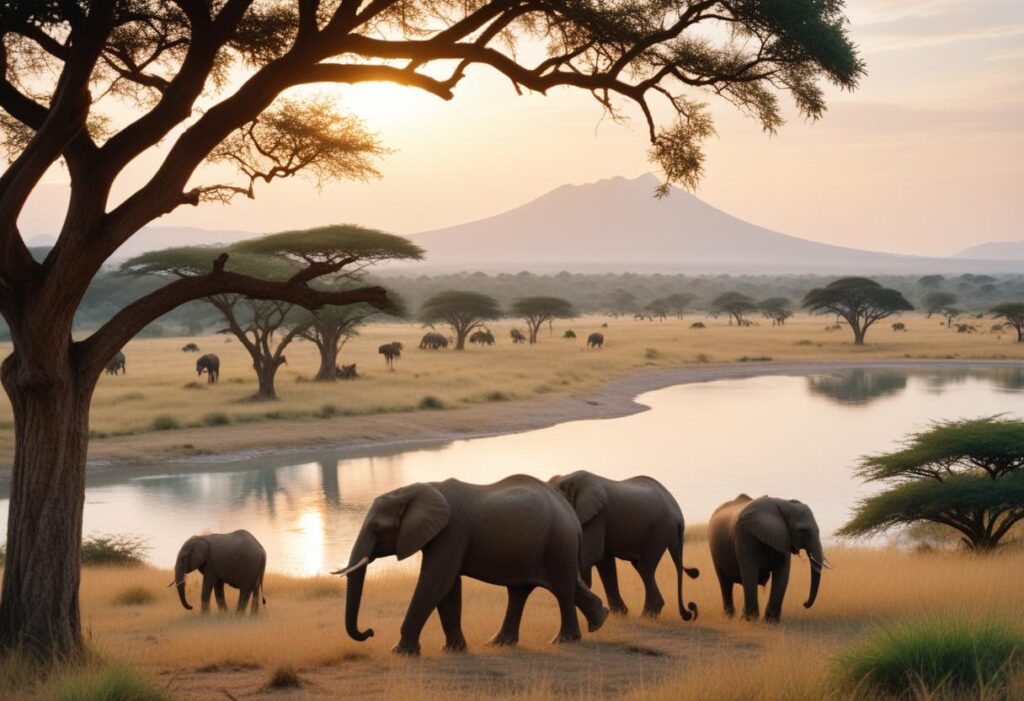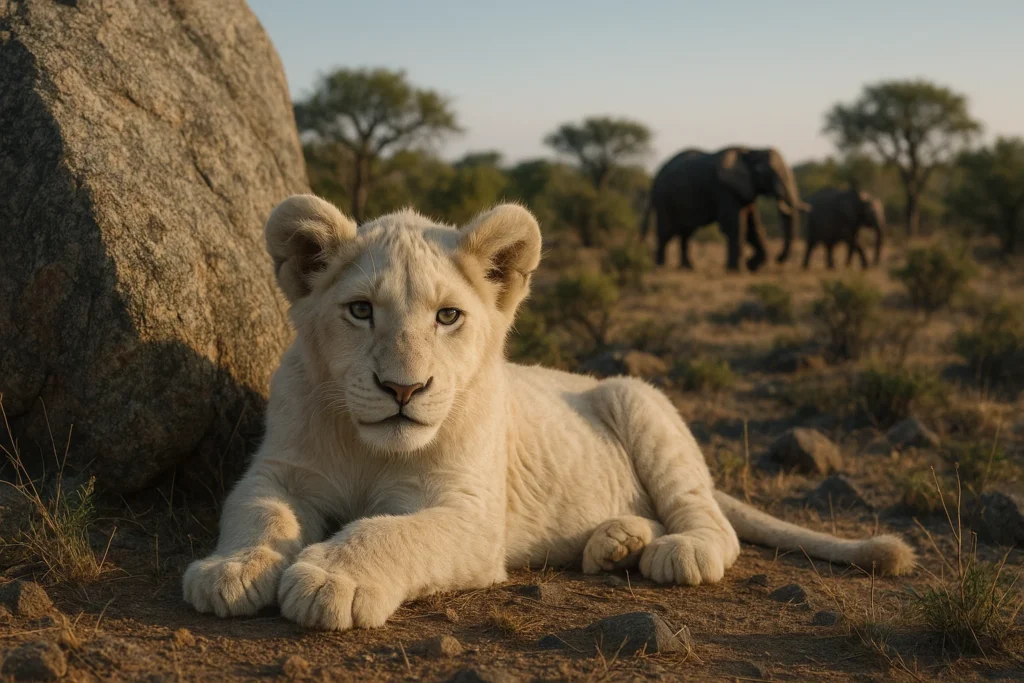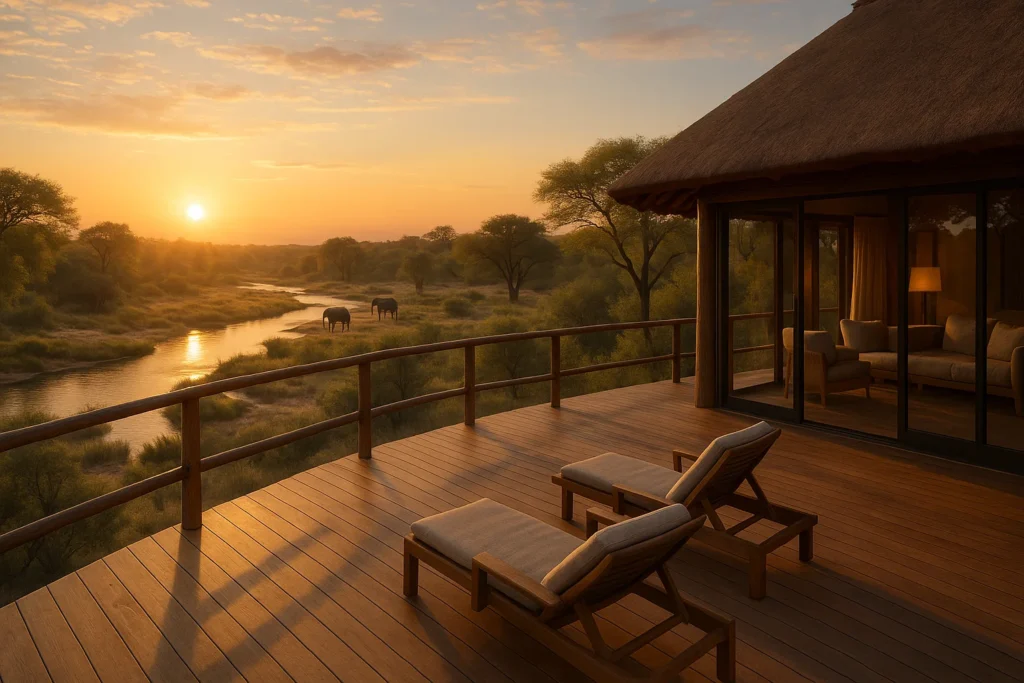Queen Elizabeth National Park is Uganda’s most-visited and biodiverse protected area. Spanning nearly 1,978 km² in the country’s western Rift Valley, the park stretches from the Rwenzori foothills down to Ishasha in the south. Its landscapes include savannah plains, lush wetlands, crater lakes, and sprawling forests—creating a mosaic that supports over 95 mammal species and around 600 bird species.
Wildlife highlights
- Iconic mammals
Spot elephants, buffalo, hippos, leopards, spotted hyenas, Uganda kob, waterbuck, warthog, and topis—plus chimpanzees in Kyambura, bushbucks, sitatunga, and more. - Tree-climbing lions
The Ishasha plains are famous for lions lounging in fig trees—a rare phenomenon found here and in just two other parks worldwide. - Rich primate life
At least 10 primate species, including chimpanzees, black-and-white colobus, L’Hoest’s monkeys, vervets, olive baboons. - Birdwatcher’s paradise
As a designated Important Birding Area, the park hosts up to 612 species—including shoebill, African finfoot, pelicans, eagles, and cranes.
Diverse habitats & landscapes
- Savannah & Wetlands
Open grasslands in Kasenyi and Ishasha dotted with acacias and drained by seasonal wetlands. - Kazinga Channel
This 45 km natural waterway connects Lakes Edward and George, teeming with wildlife—home to the world’s densest hippopotamus population and prolific birdlife. - Kyambura Gorge & Maramagambo Forest
Submerged in tropical woodland, these areas offer rich biodiversity—chimp trekking in Kyambura and forest walks amid bats, birds, and primates. - Volcanic features
Numerous explosion craters and salt lakes like Katwe, sculpted from volcanic activity 8,000 years ago.
Top safari activities
- Game drives
Early morning & late afternoon drives in Kasenyi and Ishasha for big game encounters and the famous tree-climbing lions. - Boat cruise on Kazinga Channel
One of Uganda’s most unforgettable boat safaris, offering close views of hippos, elephants, crocodiles, and waterbirds. - Chimpanzee trekking
Head to Kyambura Gorge or Kalinzu Forest Reserve to trek habituated chimp communities; success rates are high (~90%). - Birdwatching excursions
Dedicated walks and boat trips designed for birders—don’t miss the elusive shoebill in swamp habitats. - Guided nature walks
Forest floor walks in Maramagambo, wildlife hikes focusing on smaller ecosystems and conservation insights. - Cultural visits
Explore local Banyabindi, Bakonzo, and Basongora communities—traditional experiences, storytelling, and music offer immersive cultural insight
Where to stay
- Kyambura Gorge Lodge – Scenic, eco-friendly luxury perched above Kyambura Gorge.
- Mweya Safari Lodge – Central vantage point on Lake Edward offering panoramic game-viewing decks.
- Bush Lodge (northern sector) – Traditional safari camp near Kasenyi, ideal for game drives.
- Ishasha Wilderness Camp – Canvas tents within the tree-climbing lions’ realm.
Also available: mid-range lodges like Katara, Elephant Plains, and budget-friendly Pumba Cottages.
Best Time to Visit & Practical Tips
- Ideal seasons:
January–February & June–September are peak for wildlife sightings. Wet seasons (March–May, Oct–Nov) offer lush landscapes and birdlife splendor but can hinder travel. - Accessibility:
Around 400 km from Kampala; reachable via road, flights to Kasese Airstrip, or chartered flights directly to mweya. - Climate & health:
Warm days (avg. 29 °C) and mild nights (~17 °C). Rainfall occurs year-round, peaking in April–May. Bring insect repellent, sun protection, binoculars, and sturdy walking shoes. - Safety & conservation:
The park hosts local communities and holds UNESCO Biosphere Reserve status. Security has been strengthened since the 2019 Ishasha incident
Conclusion
Queen Elizabeth National Park is a marvel of biodiversity—rich in wildlife, unique geological features, complex ecosystems, and vibrant cultural heritage. Whether you’re tracking chimpanzees in the forest, watching lions nap in tree branches, cruising the Kazinga Channel, or simply soaking in the Rift Valley vistas, this park offers a deeply rewarding safari adventure.
FAQs
You’ll need permits for chimp trekking, tree‑climbing lion zones, and boat cruises. Your tour operator usually arranges these in advance.
Yes—many itineraries include a visit to Bwindi Impenetrable Forest after Queen Elizabeth for gorilla tracking, ideal for 4–6 day safaris.
Absolutely—many lodges cater to families, and daytime game drives and boat trips are safe and engaging for kids.
Yes, malaria is a risk year-round. Consult a travel clinic before your trip and use repellent and nets.
Possible but not advised. Park roads can be challenging; hiring a 4WD with a guide enhances safety and wildlife spotting.






